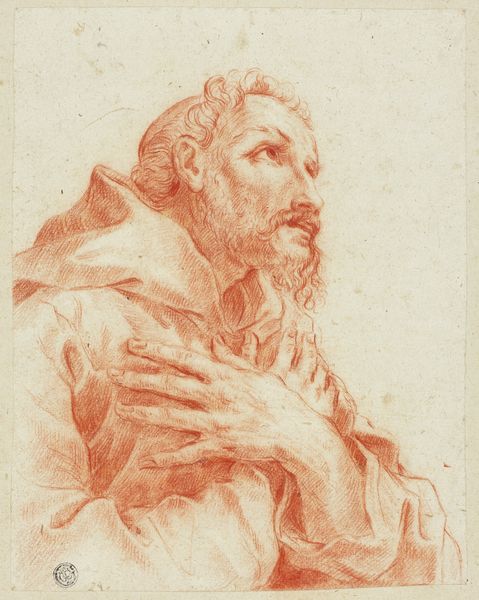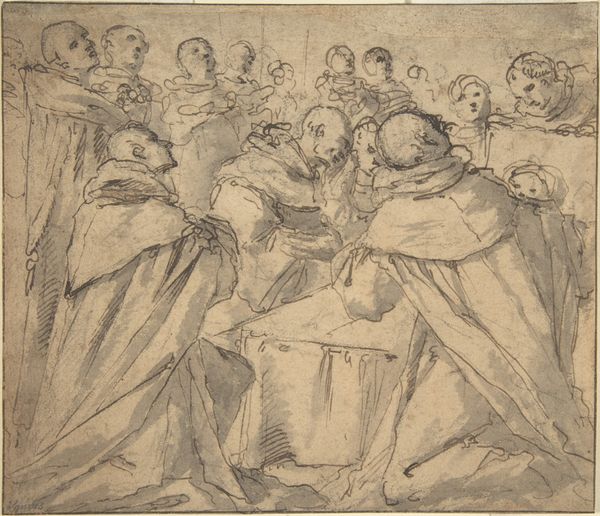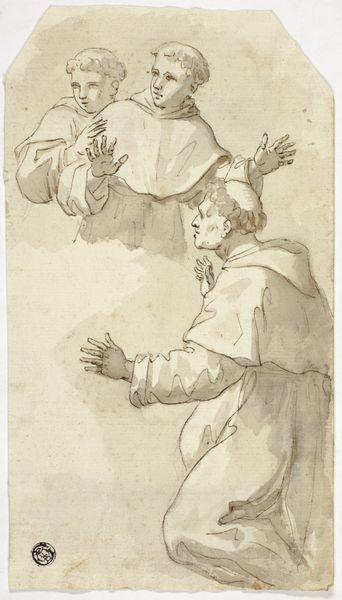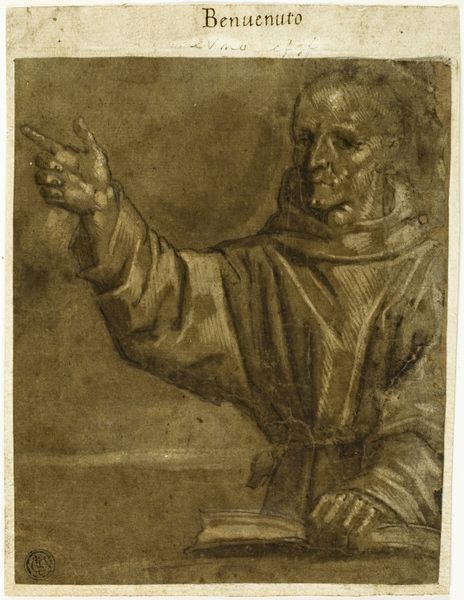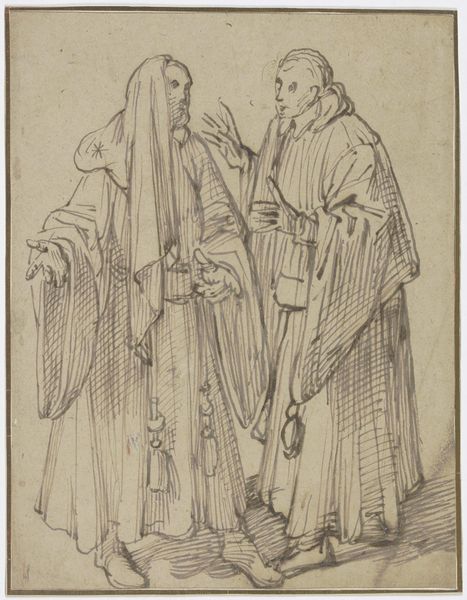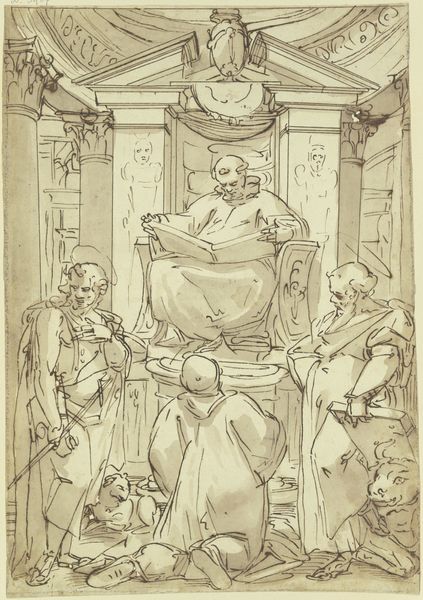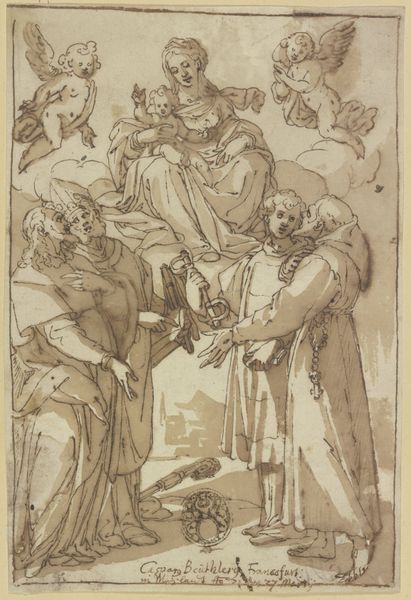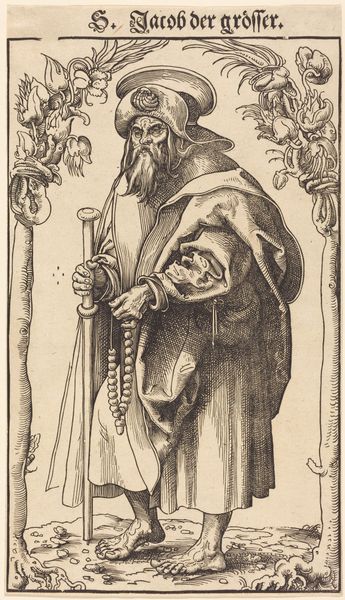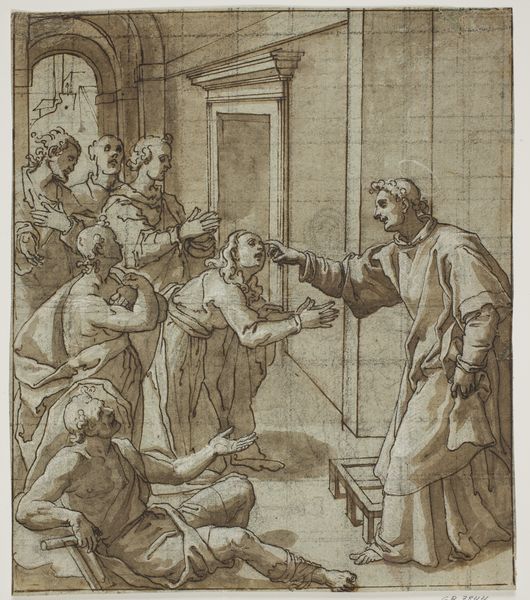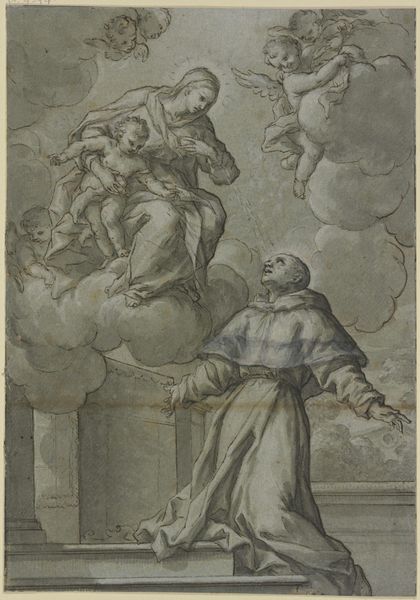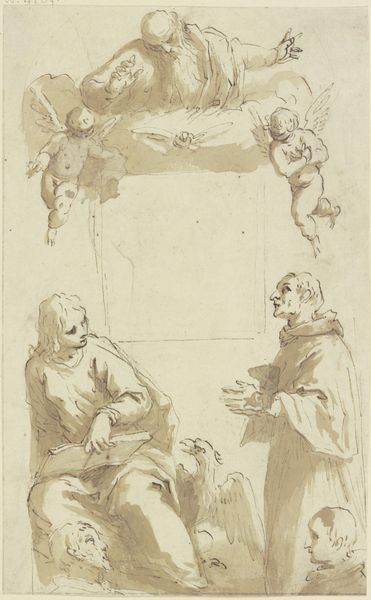
Saint Francis of Assisi, with two Monks of his Order after 1611
0:00
0:00
drawing, print, paper, ink, pencil, chalk, graphite, charcoal
#
pencil drawn
#
drawing
#
baroque
# print
#
charcoal drawing
#
figuration
#
paper
#
ink
#
pencil drawing
#
pencil
#
chalk
#
graphite
#
portrait drawing
#
charcoal
#
academic-art
Dimensions: 181 × 170 mm
Copyright: Public Domain
Curator: Standing here, you can see "Saint Francis of Assisi, with two Monks of his Order" created after 1611 by Guido Reni. It's currently held at The Art Institute of Chicago, and it's a striking example of Baroque figuration. Editor: Wow, there's something so compelling in the way all three figures gaze upward. There is this unified aspiration in their faces and in their bearing—like a magnet has pulled them upwards and forwards—that gives the piece an almost hypnotic feel. Curator: It’s intriguing, right? Made with ink, charcoal, chalk, graphite, and pencil on paper, it has an amazing range of tones for what are ostensibly basic materials. Reni truly coaxes out the texture from simple pigments. The cross-hatching lends so much to that sense of movement you mentioned. Editor: It makes me think about the way monastic orders are presented even today. The visual shorthand is of men enraptured with spiritual matters, totally separate from everyday concerns. Francis, especially, is a loaded figure given that his order was designed to advocate for the poor while ostensibly detaching themselves from any materialism. It is difficult to parse, isn't it? This need for representation, even in humble garb. Curator: Absolutely, though Reni's piece avoids ostentation. His ability to render the folds of their simple habits really captures their dedication, the quietude. To me, there's always an element of self-fashioning going on with these holy types—presenting an idealized vision. We always perform our own stories, even through acts of purported denial. Editor: And there's something very powerful, I think, about how this almost monochromatic, shadowed quality enhances the serious and somewhat dour mood. The textures lend realism to the monks’ features, showing a hint of the harsh realities they are meant to transcend, yes? We should not look at this drawing as just technique; there is always ideology! Curator: That’s very well put. Ultimately, it’s a meditation on devotion, on outward expressions of inward experience, and, of course, on the artist's own ability to conjure profound feeling. Editor: The longer I stand here, the more questions it provokes! It reminds us that images speak volumes, intentionally or not. The way Reni depicted Francis and his brethren remains highly impactful centuries later.
Comments
No comments
Be the first to comment and join the conversation on the ultimate creative platform.
